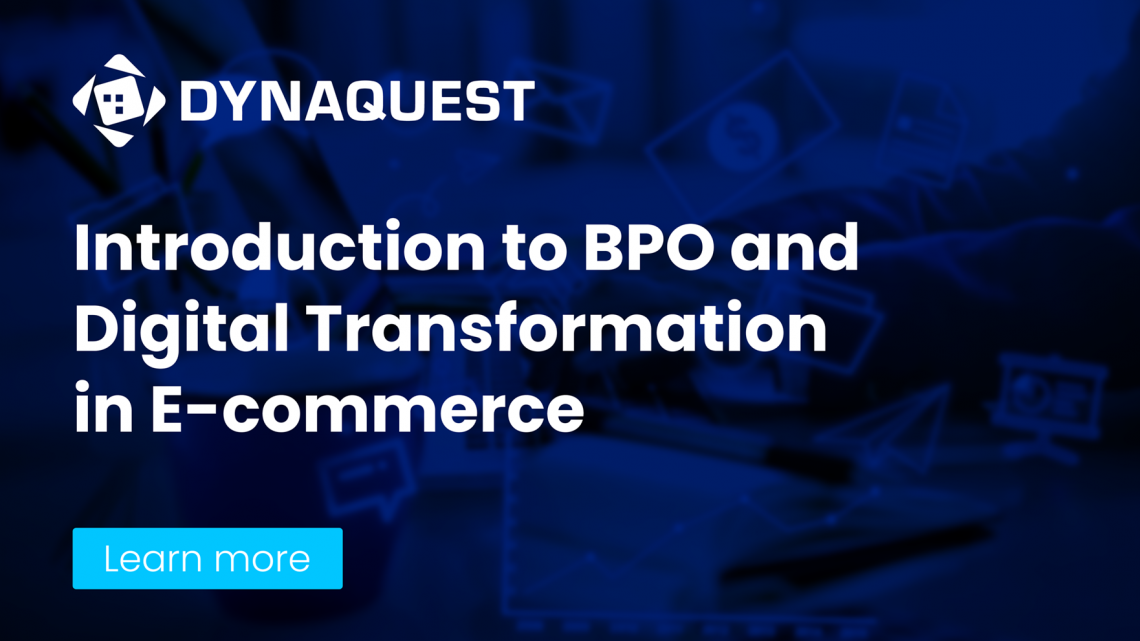
The retail world is undergoing a seismic shift. With the rise of digital-first consumers and the growing demand for retailers to stay ahead, digital transformation has evolved from a mere buzzword to an essential survival strategy.
In 2021, global online shopping sales reached nearly five trillion U.S. dollars and are projected to exceed seven trillion by 2025. This explosive growth is driven by improved online access, especially in regions where traditional broadband was once limited but where affordable mobile internet is now making a significant impact. (Statista)
In this new era, Business Process Outsourcing (BPO) has emerged as a key driver behind retail’s evolution. By outsourcing non-core tasks, retailers can focus on innovation, operational agility, and delivering seamless customer experiences.
But how exactly does BPO accelerate digital transformation for e-commerce and retail businesses? And what factors are pushing more retailers to embrace outsourcing?
Let’s dive in.
Adapting or Failing: Why Retail’s Survival Hinges on Digital Transformation
In today’s fast-paced market, consumers demand instant gratification. From personalized online experiences to lightning-fast delivery times, the bar has never been higher. E-commerce companies that fail to meet these expectations are quickly falling behind.
A major trend in e-commerce today is the dramatic rise in mobile device usage. By early 2024, smartphones were responsible for nearly 80 percent of all retail website visits worldwide and drove the majority of online orders, surpassing desktops and tablets. This shift is particularly pronounced in regions with limited digital infrastructure, where mobile integration is transforming the shopping experience. M-commerce is especially dominant in Asia, with countries like China and South Korea generating over 70 percent of their online sales through mobile devices. Meanwhile, online marketplaces have become the leading force in global online purchases, with Amazon ranking as the top platform in terms of traffic. (Statista)
Digital transformation isn’t just about adopting technology—it’s about reshaping business models to deliver more value to customers through tech-driven solutions. Whether it’s through automation, AI, or seamless omnichannel experiences, retailers are now competing not just on price or product quality but on their ability to adapt to changing consumer behaviors.
So, where does BPO come into play? BPO allows retailers to focus on the customer while outsourcing the heavy lifting of back-office operations, logistics, and customer service. This enables them to streamline their processes and stay competitive in an ever-evolving landscape.
BPO: The Secret Weapon Behind Retail’s Digital Evolution
While e-commerce giants like Amazon and Alibaba have built empires on efficient processes and technological innovation, smaller retailers often struggle to keep up. This is where BPO acts as a secret weapon.
Outsourcing allows businesses to offload critical but non-core activities—such as customer support, inventory management, data processing, and even IT infrastructure management—so they can focus on core business objectives like product innovation, marketing, and building a better customer experience.
For instance, many retailers are partnering with BPO providers to manage their logistics and supply chains more effectively. By outsourcing these operations, businesses can reduce overhead, improve delivery times, and minimize errors, creating a more seamless experience for the customer.
Additionally, BPO providers come equipped with the latest tools and technologies that many retailers may not have the time or resources to implement on their own. This access to cutting-edge solutions allows e-commerce companies to stay ahead of the curve and drive digital innovation within their organizations.
What’s Fueling the Shift? The Forces Driving Retailers to Embrace BPO
The adoption of BPO in retail isn’t happening in a vacuum—there are key forces behind this shift, pushing retailers to rethink how they manage their operations. Below are the major drivers behind the increased adoption of BPO in e-commerce:
Cost Efficiency
Retailers, especially in the e-commerce space, are facing intense pressure to keep costs down while delivering exceptional service. BPO offers a cost-effective solution by allowing companies to tap into expertise without the burden of maintaining large in-house teams. By outsourcing tasks like customer support or order processing, retailers can reduce labor costs, minimize infrastructure expenses, and reinvest those savings into digital transformation efforts.
Scalability and Flexibility
The retail world moves fast—especially during peak periods like Black Friday, holiday seasons, or sudden spikes in demand due to market trends. BPO providers offer the flexibility to scale up or down based on demand, giving retailers the agility they need without long-term staffing commitments. This scalability enables e-commerce companies to handle surges in traffic, orders, and customer inquiries with ease.
Access to Advanced Technology
Many BPO providers are at the forefront of technological advancements. By partnering with an experienced outsourcing partner, retail businesses can gain access to AI-driven automation tools, data analytics, and cloud-based solutions without the upfront investment in technology. This allows them to integrate tech seamlessly into their operations, making processes more efficient and data-driven.
Enhancing Customer Experience
In today’s competitive retail landscape, customer experience can make or break a brand. BPO providers offer multilingual support, 24/7 customer service, and the ability to handle omnichannel interactions across email, phone, and social media. This improves customer satisfaction, loyalty, and brand reputation—while freeing up internal teams to focus on more strategic tasks.
Transition to Part 2: Unpacking the Core Drivers of BPO’s Influence in Retail
In Part 1, we explored how BPO is driving digital transformation and the key forces that are pushing retailers to embrace outsourcing. In Part 2, we’ll take a deeper dive into each of these factors, exploring how cost efficiency, scalability, technology, and enhanced customer experience are transforming the way retail businesses operate in the digital age.




